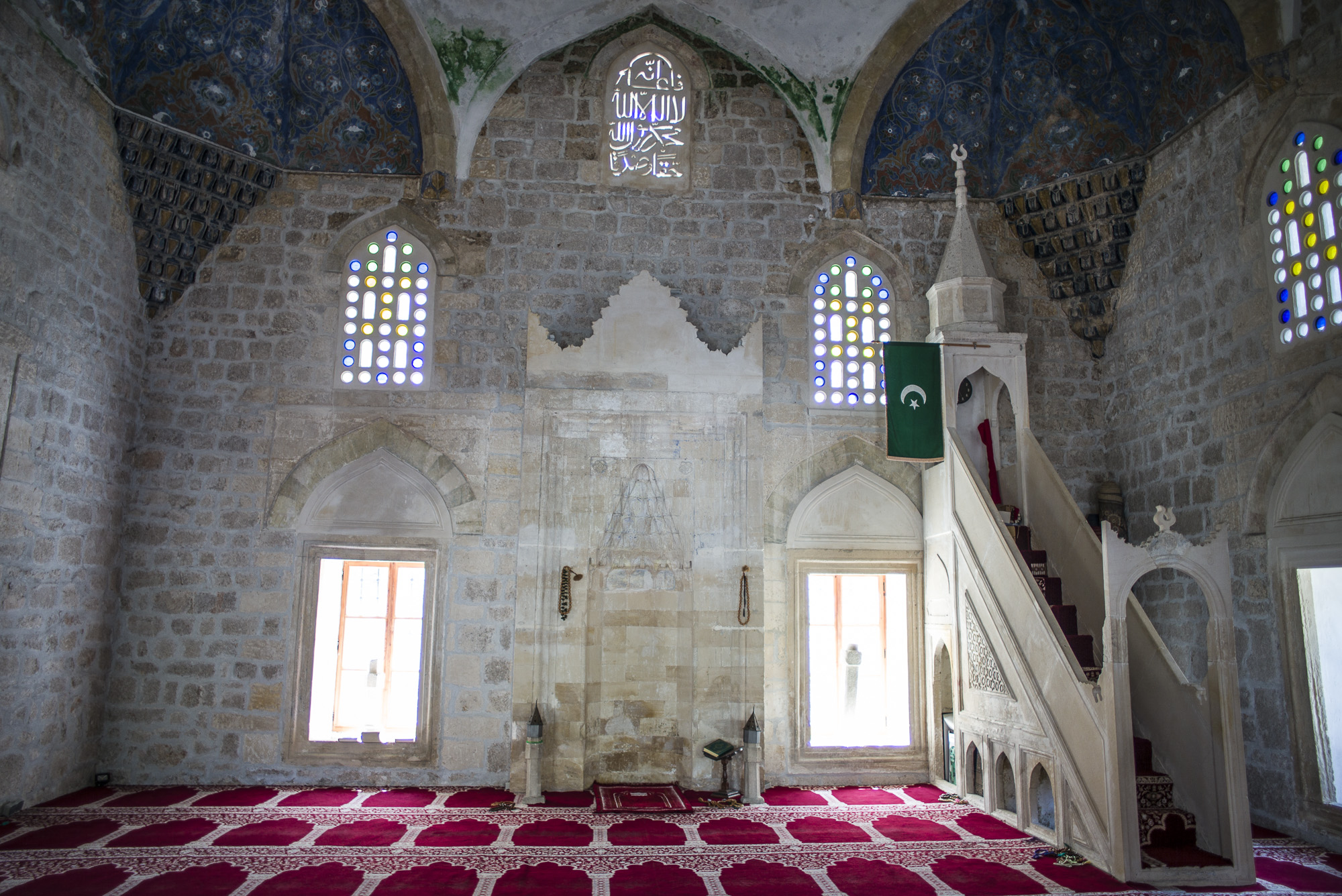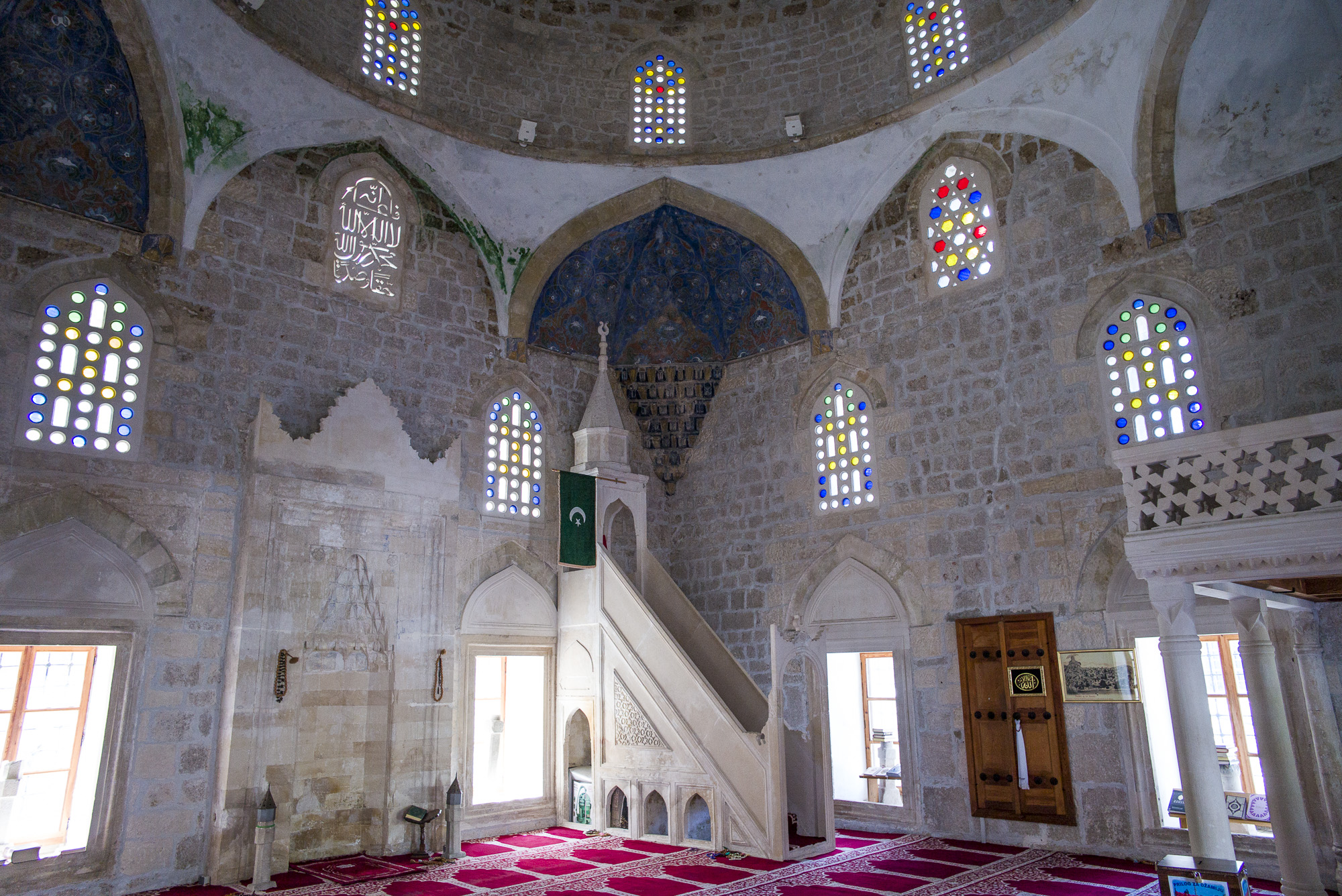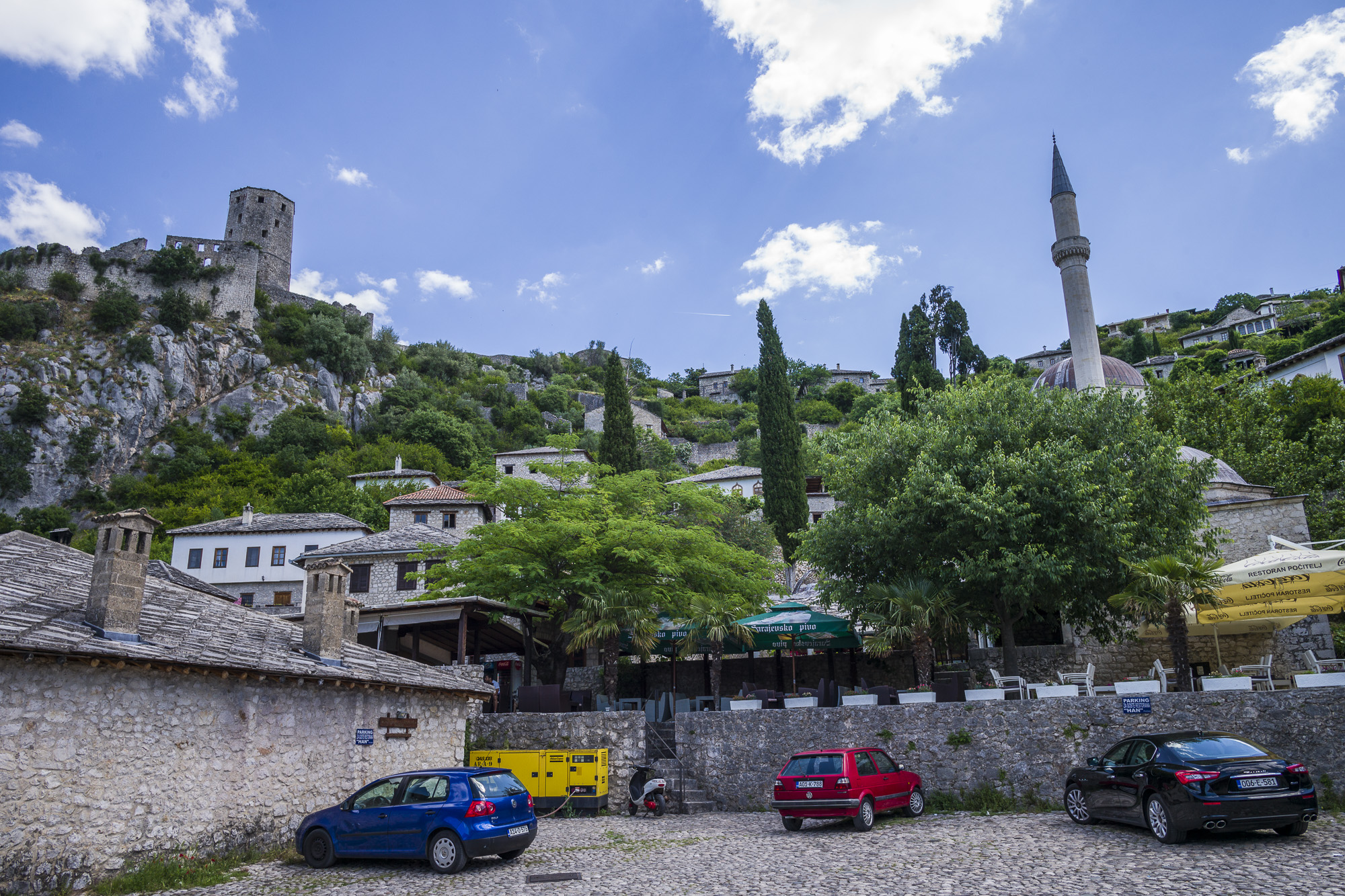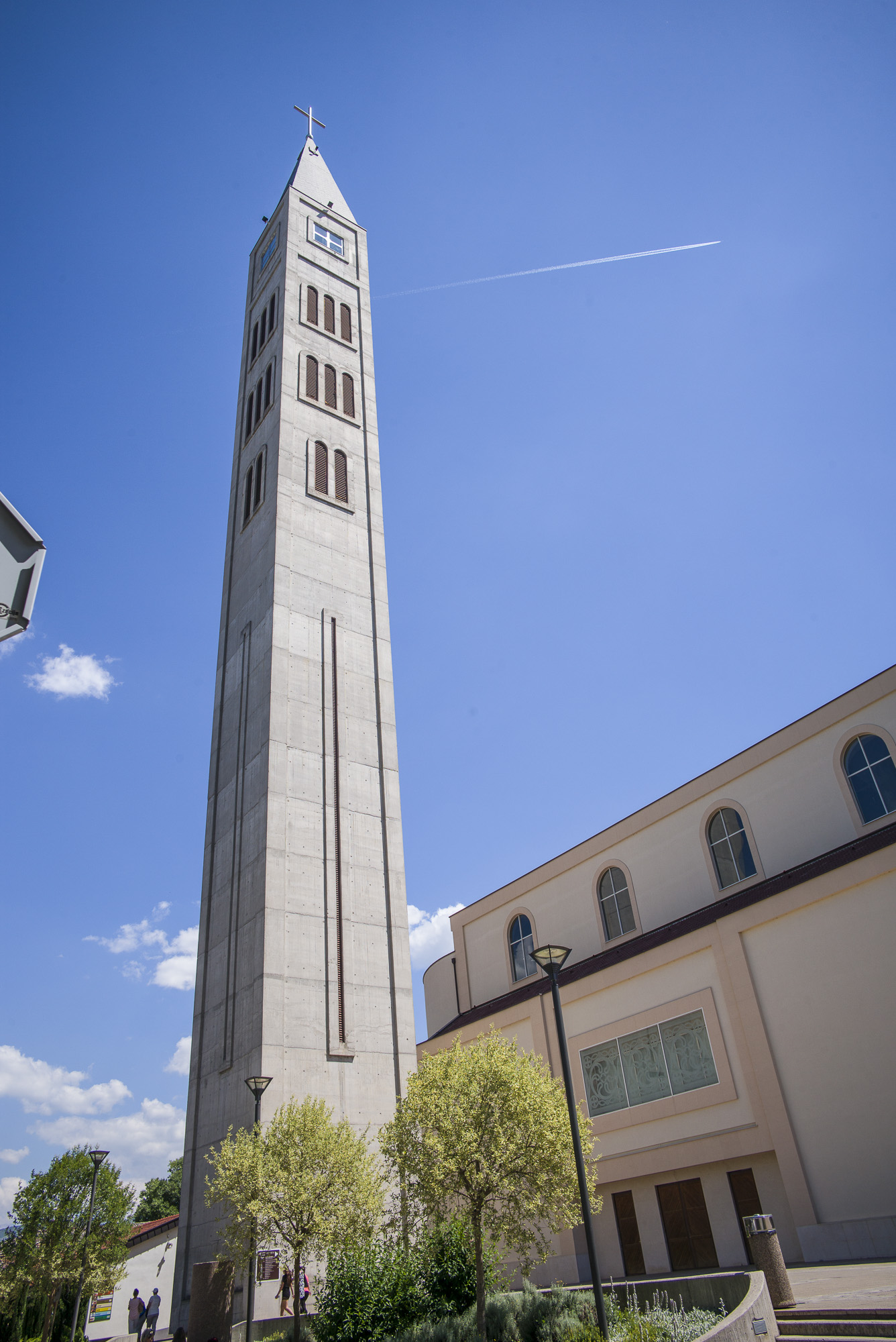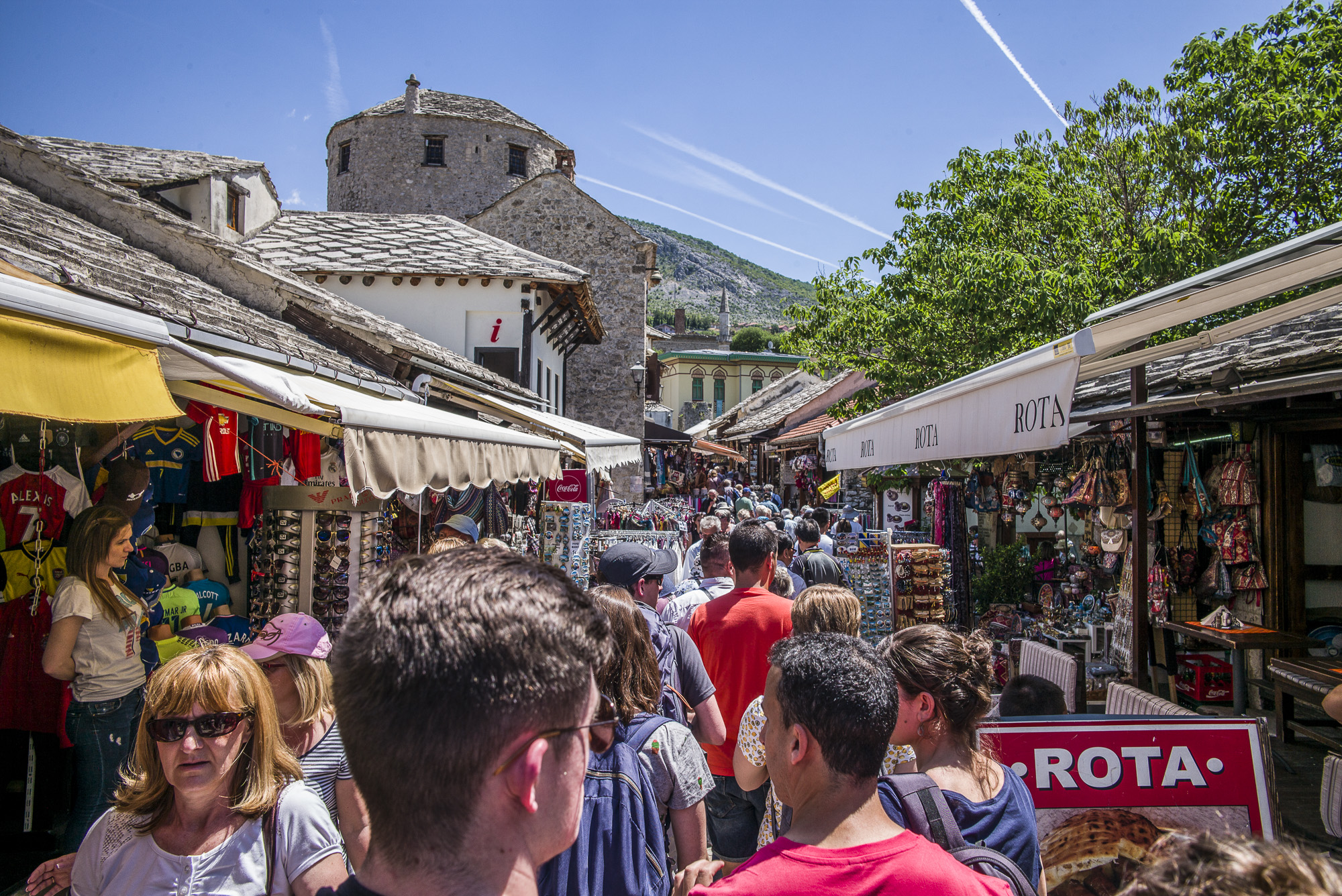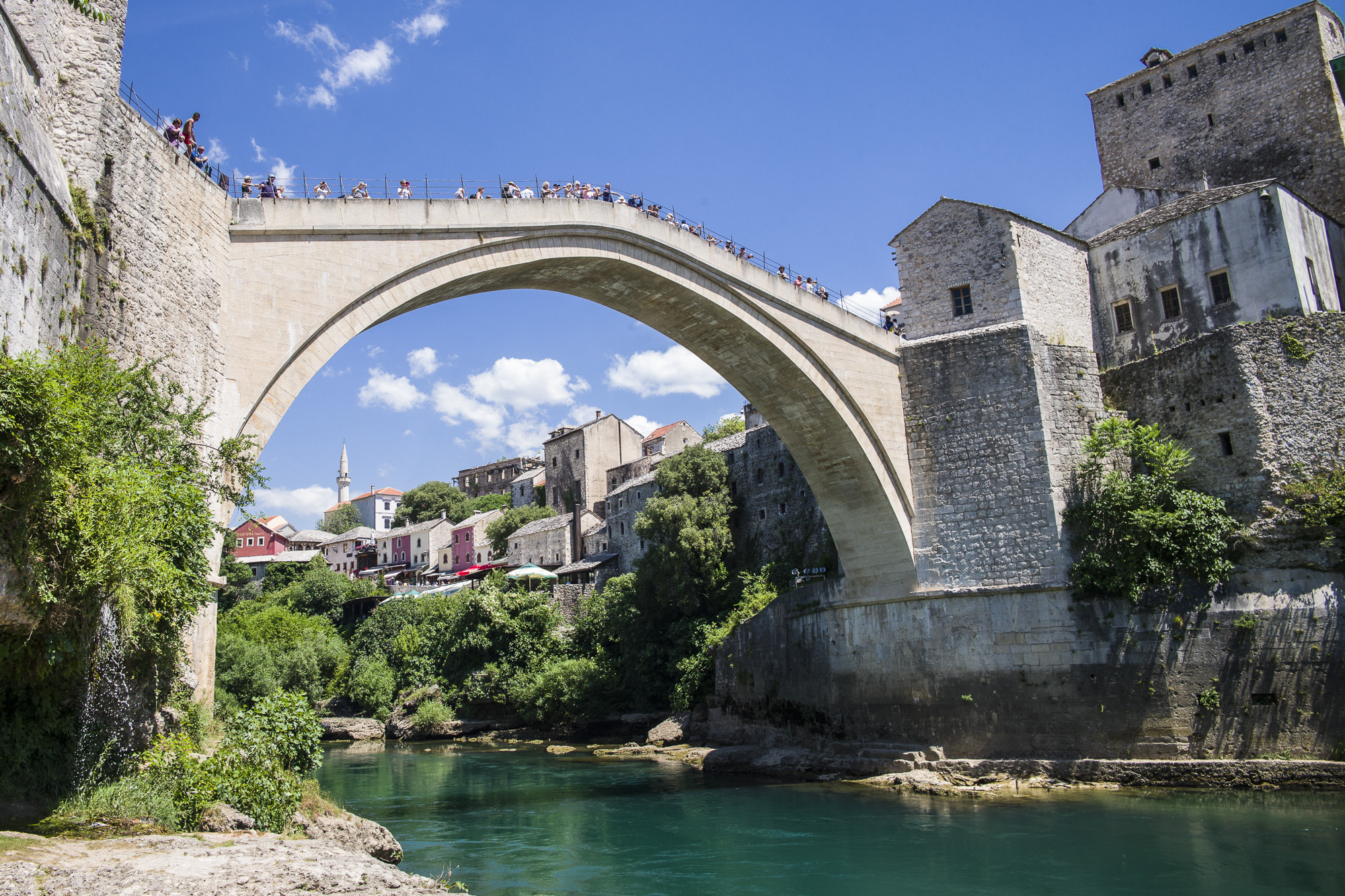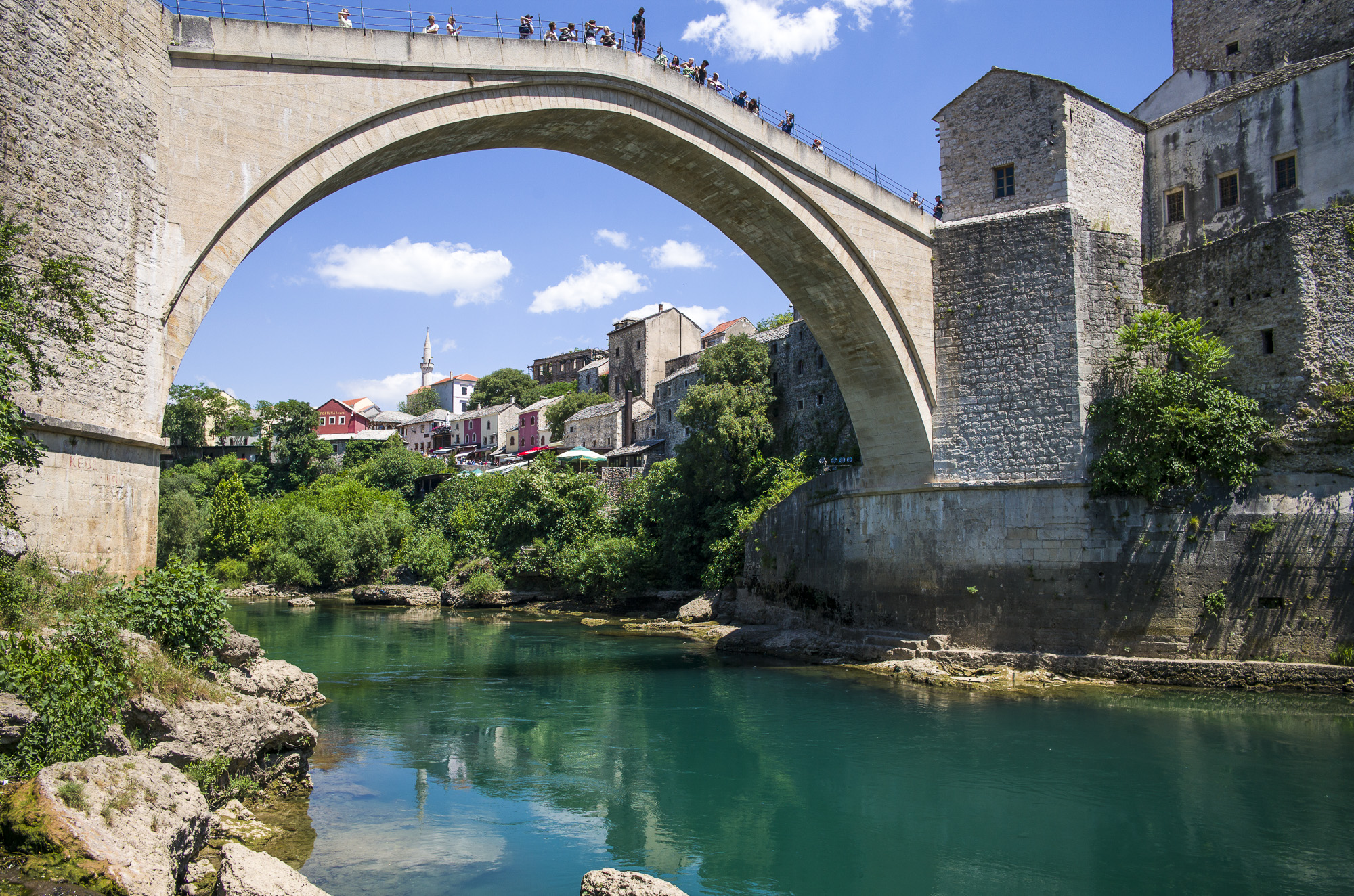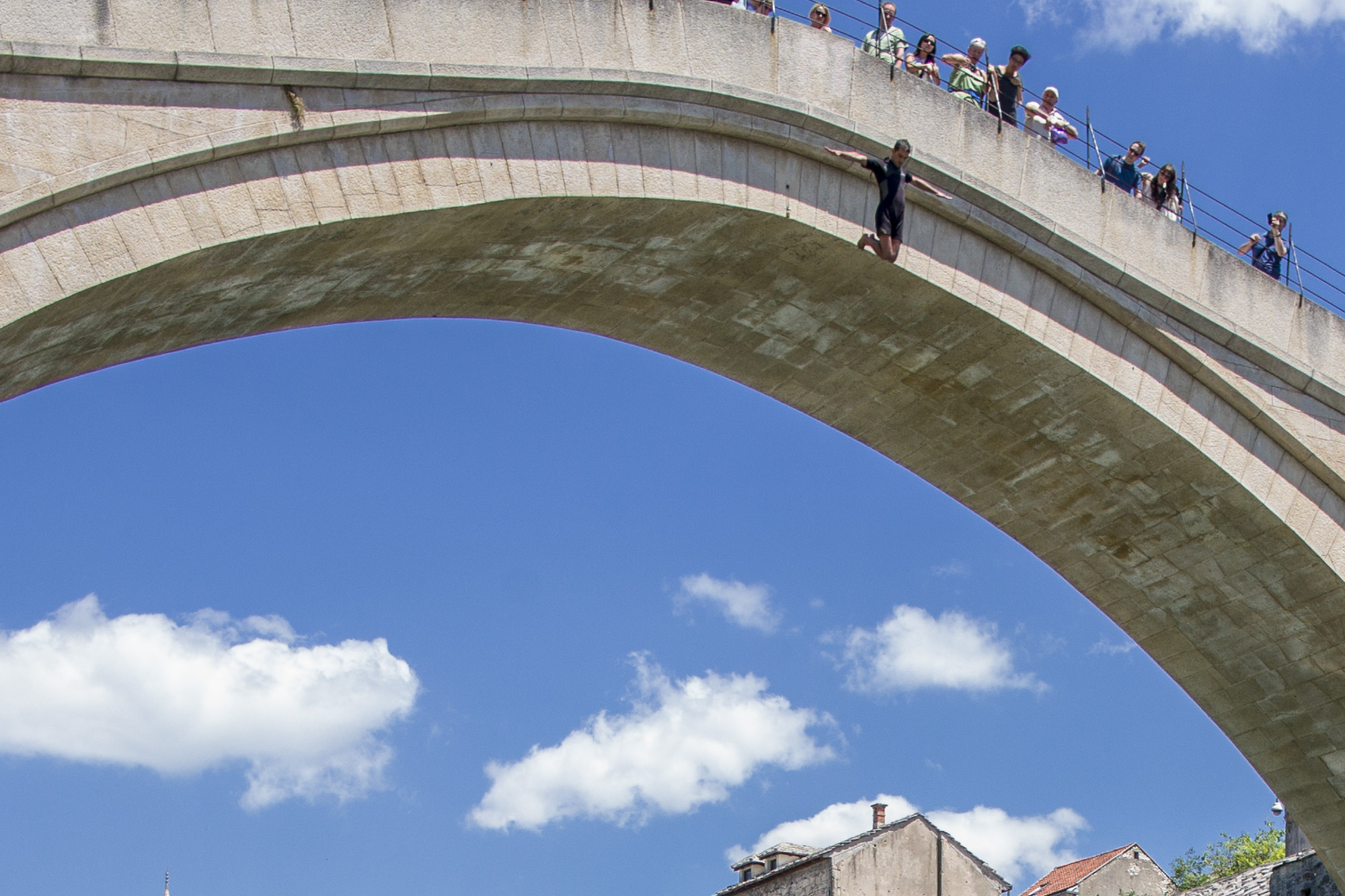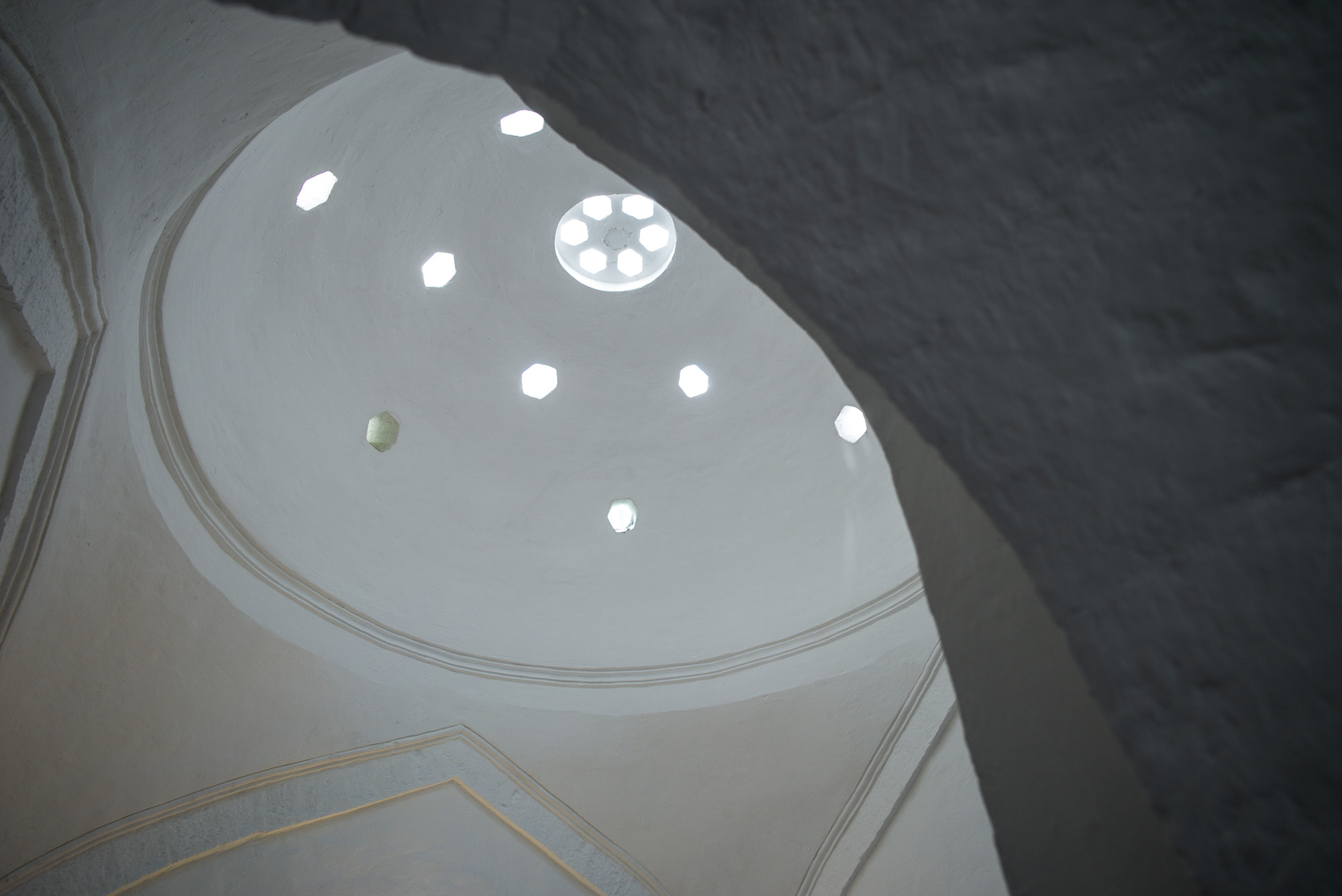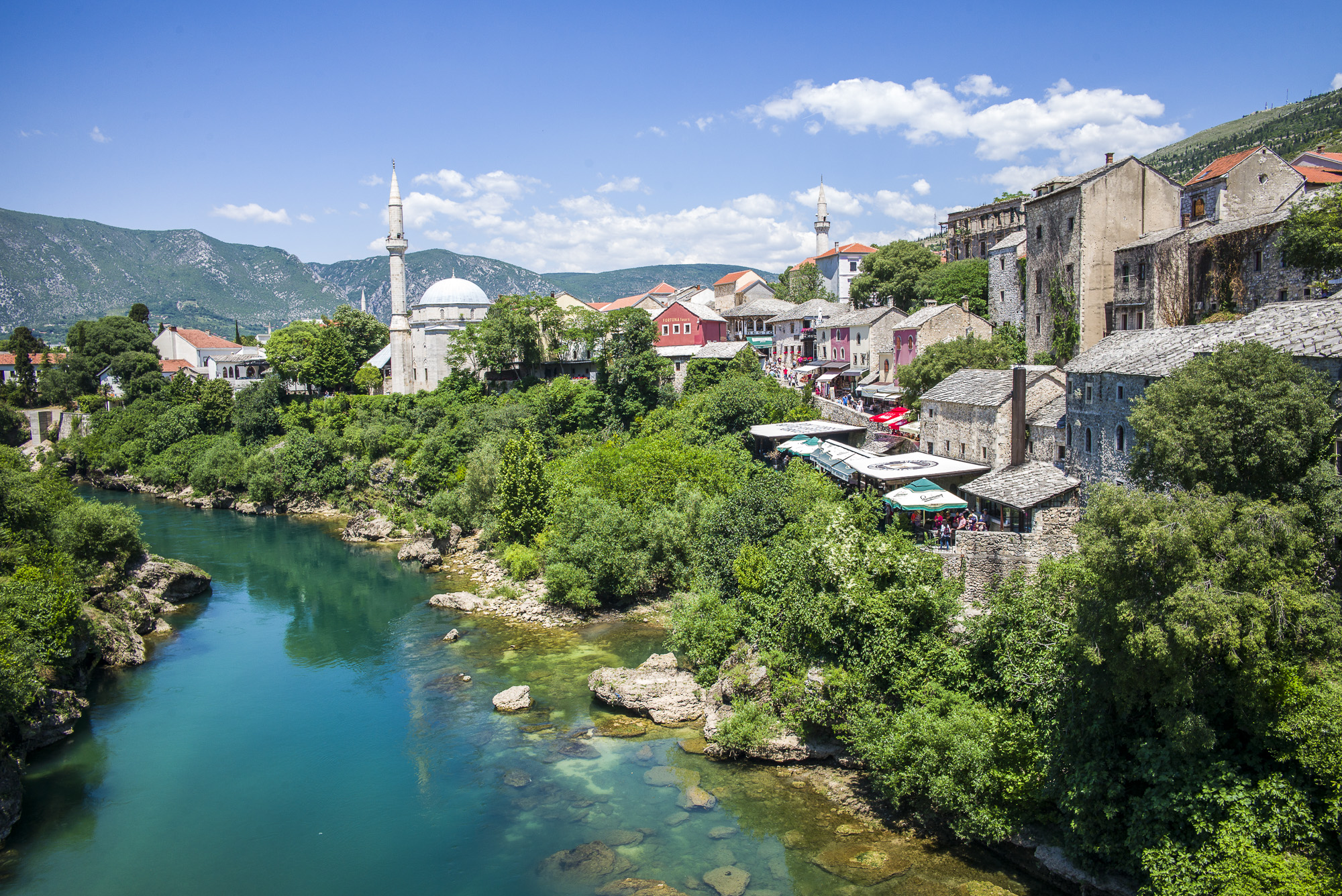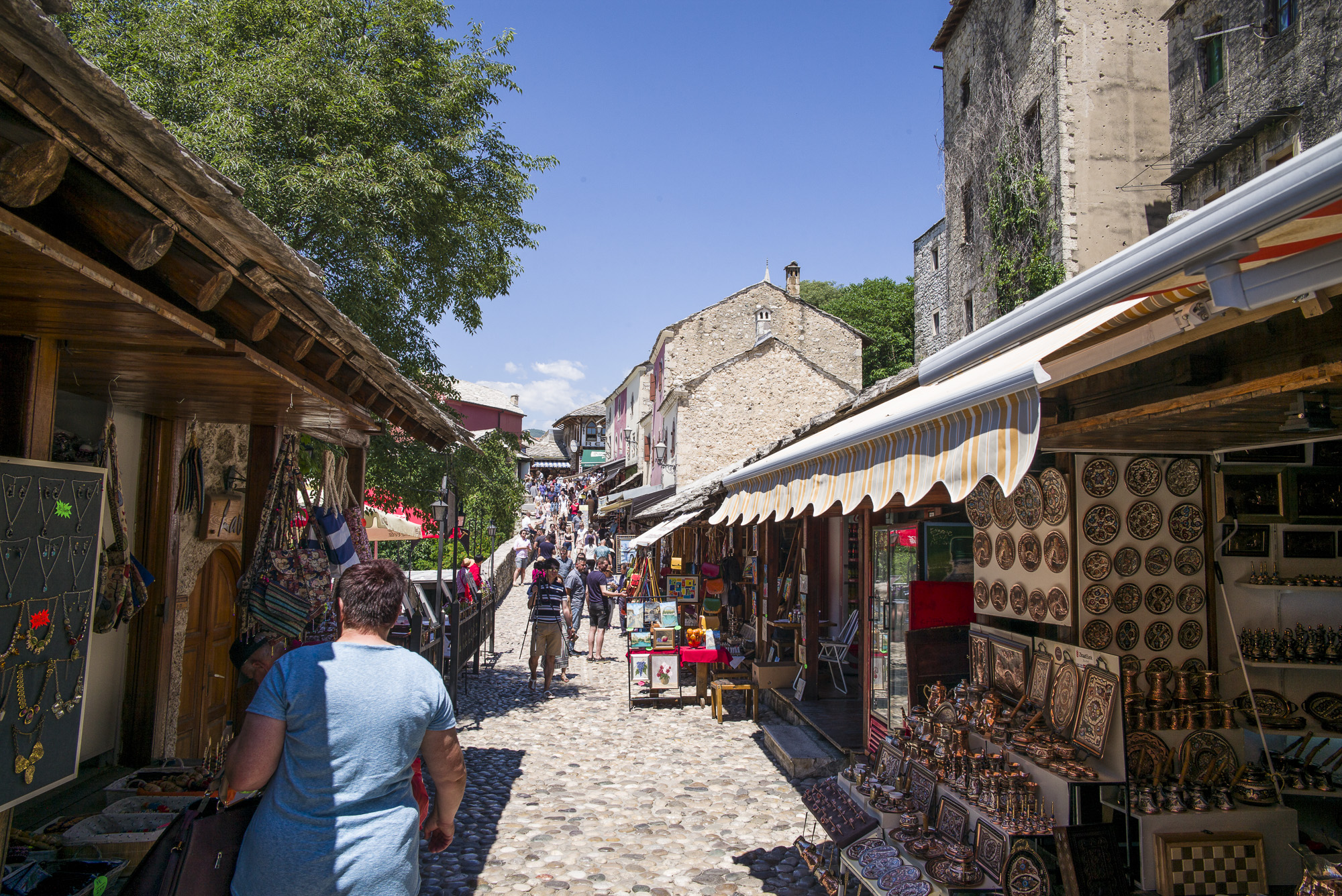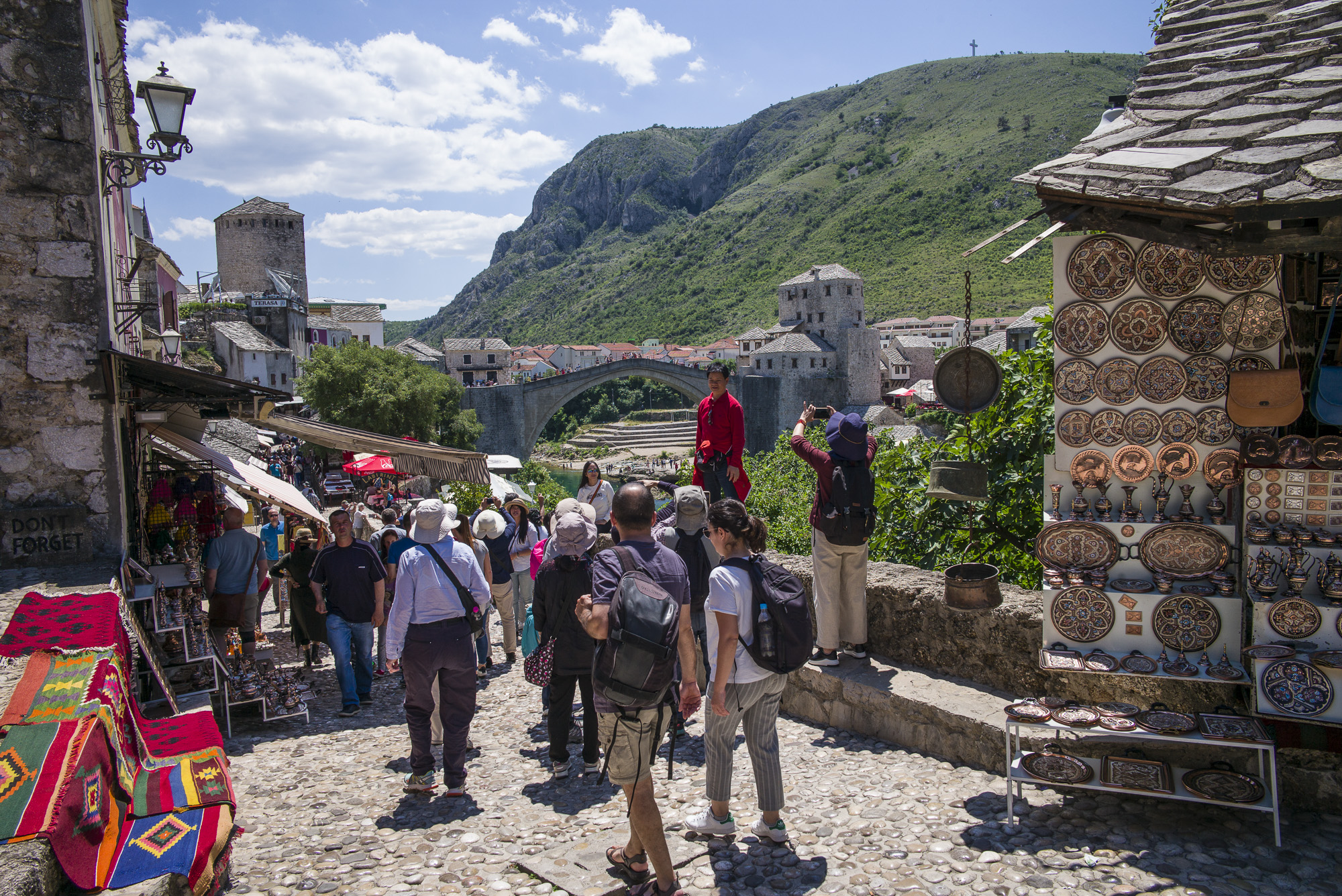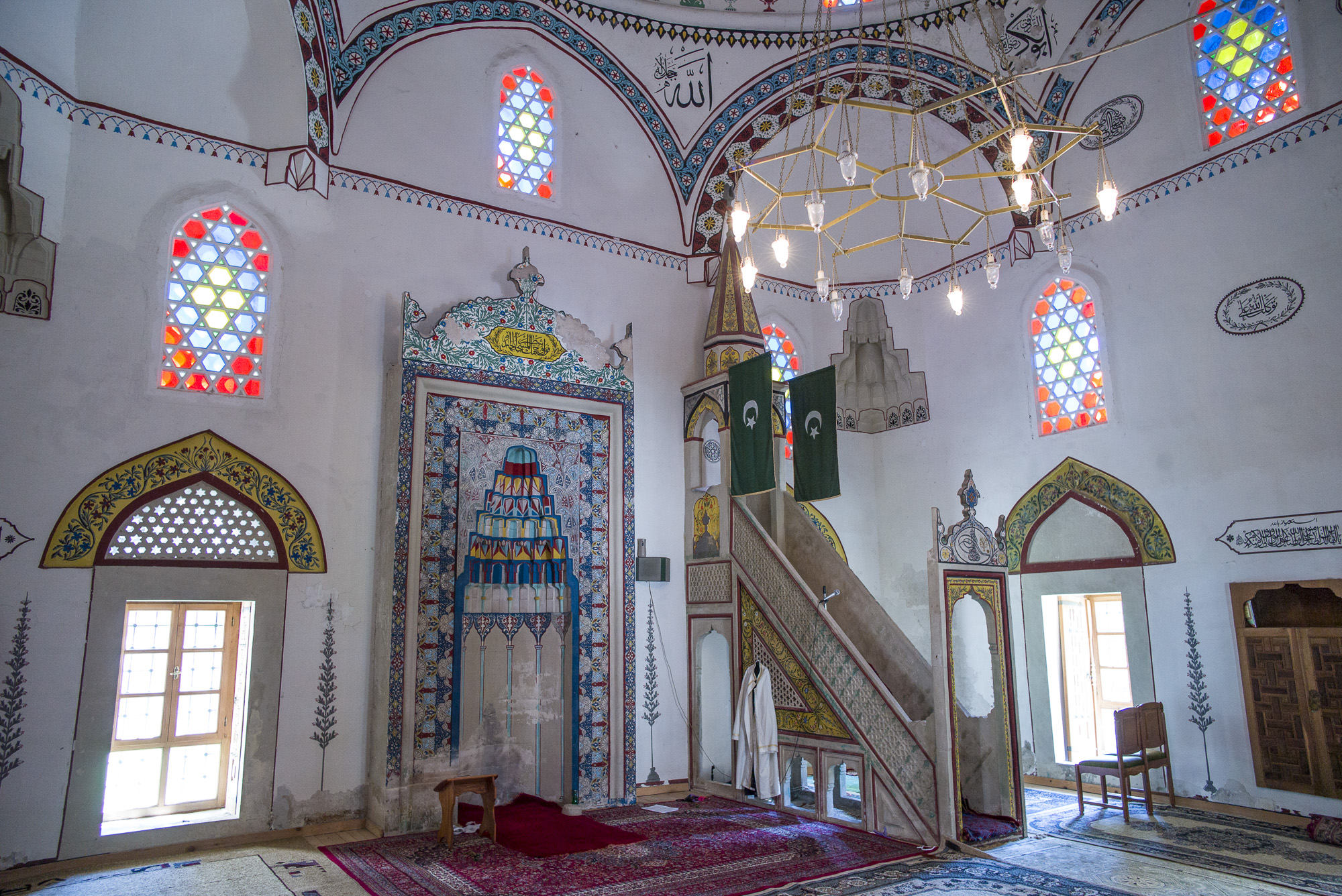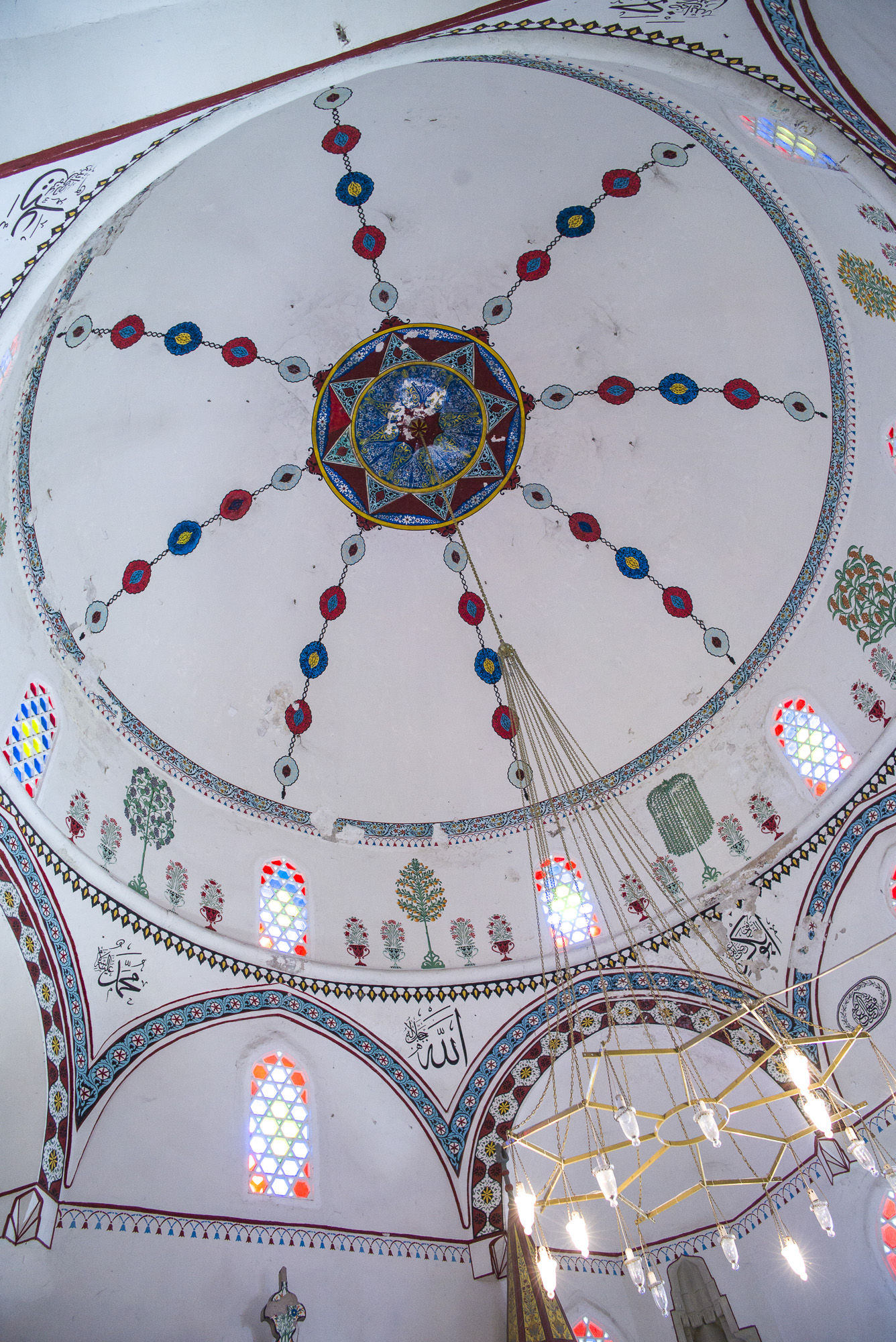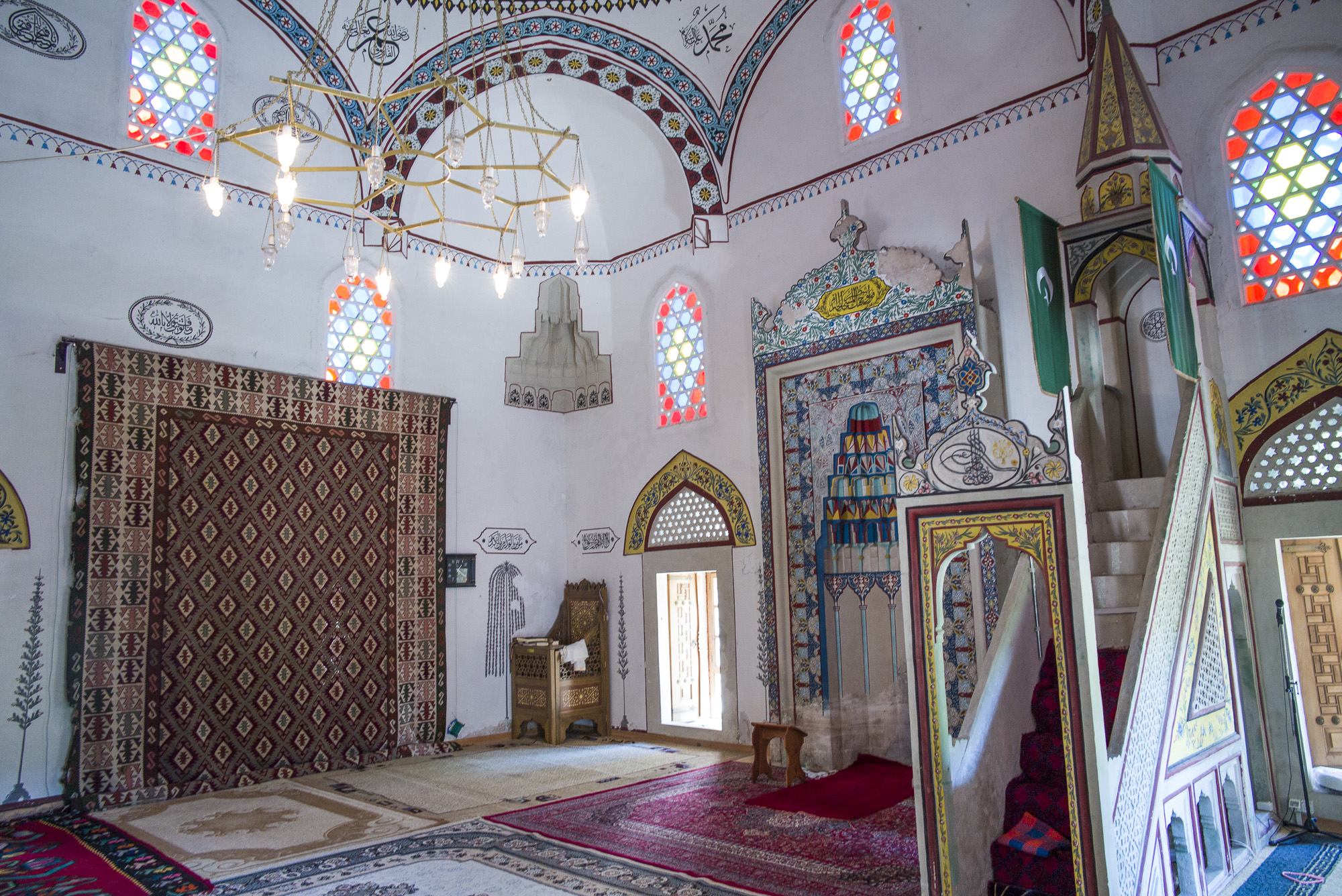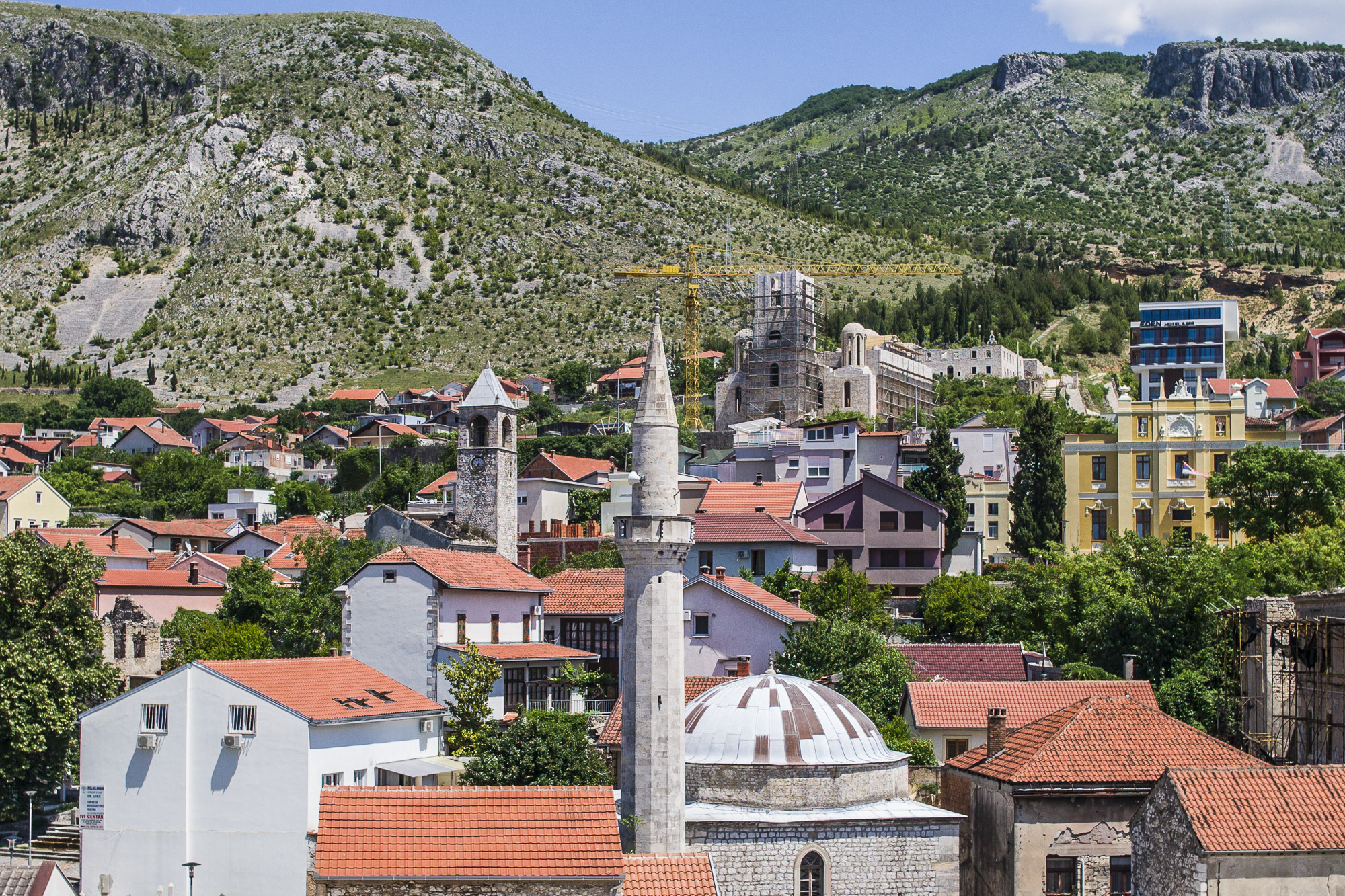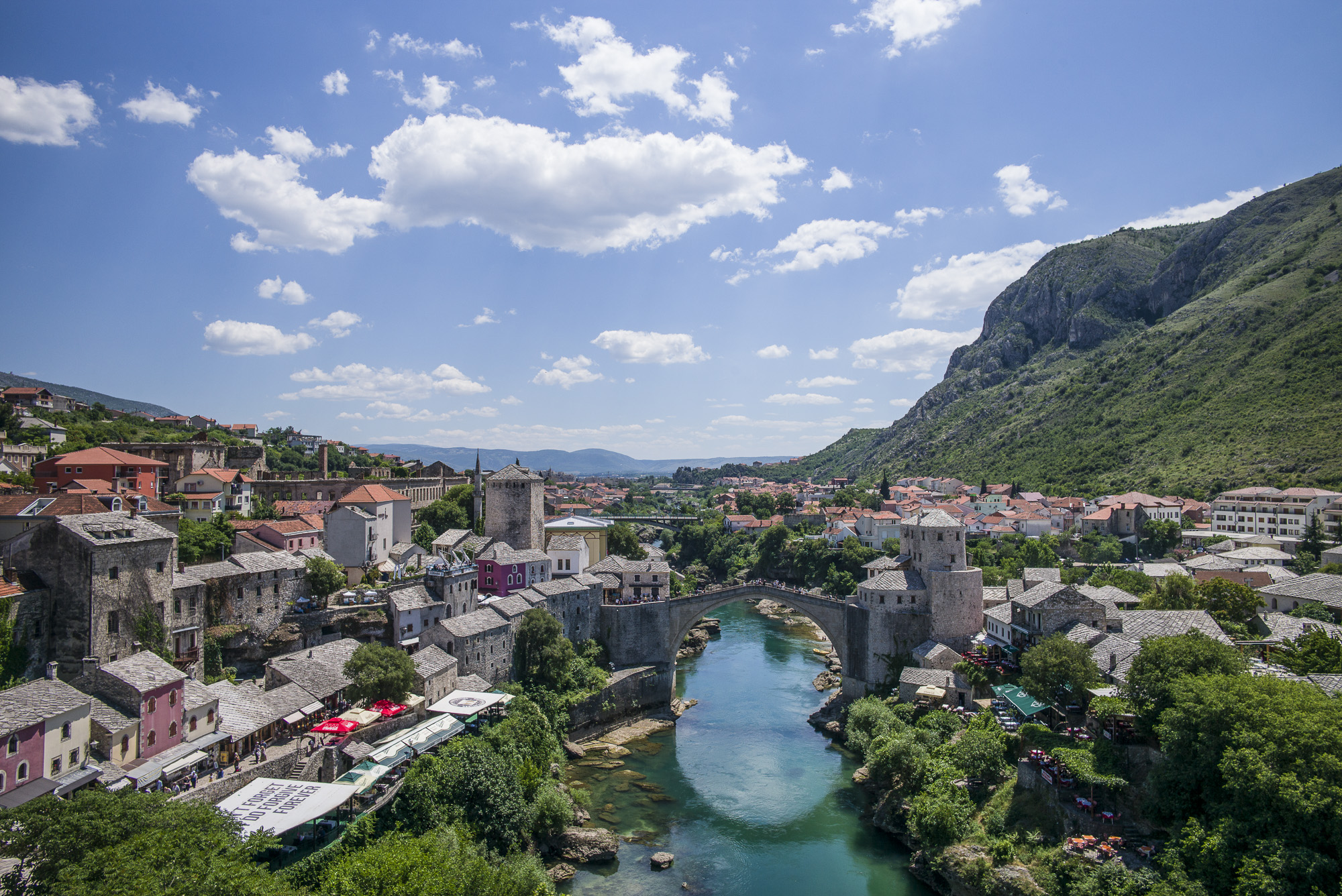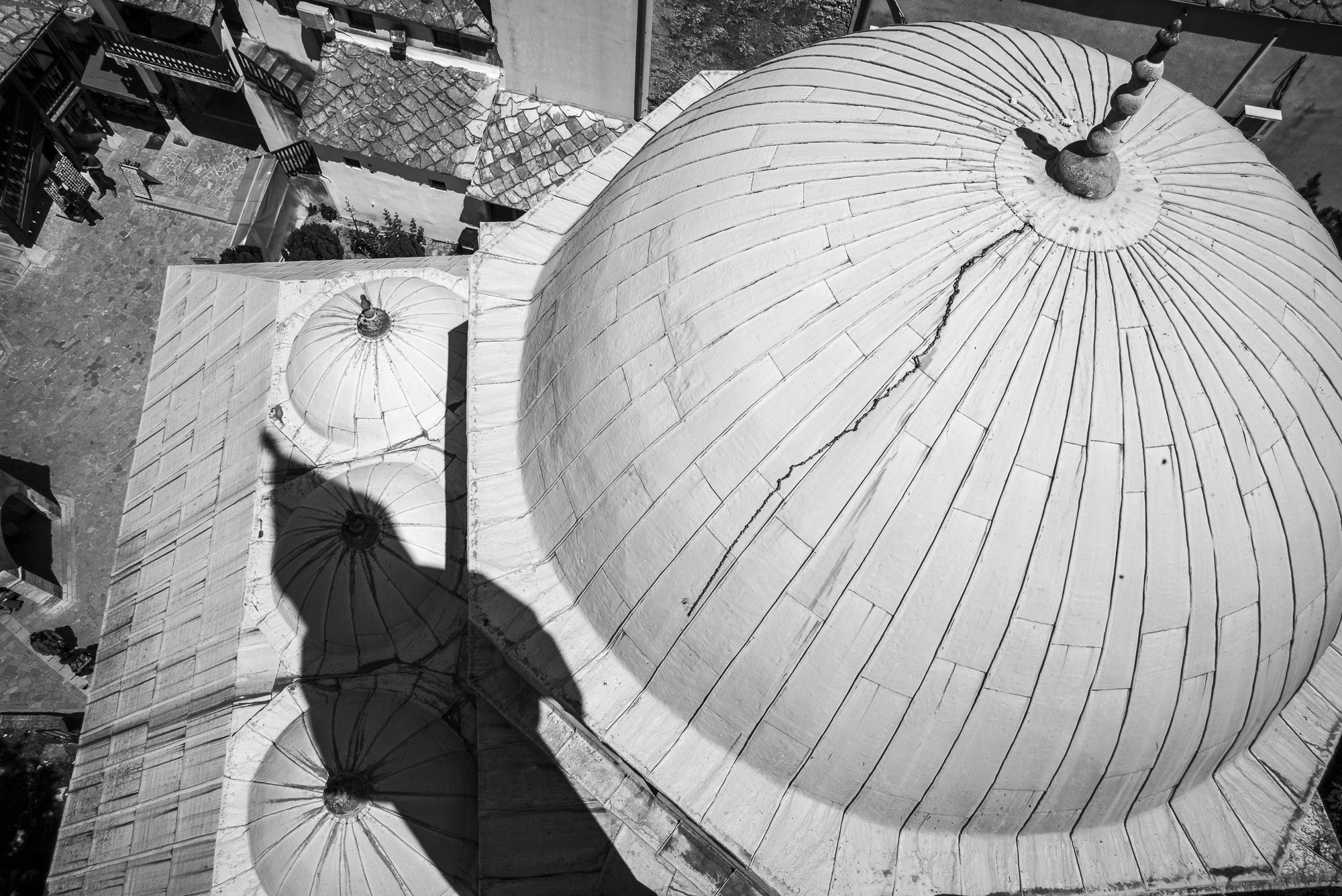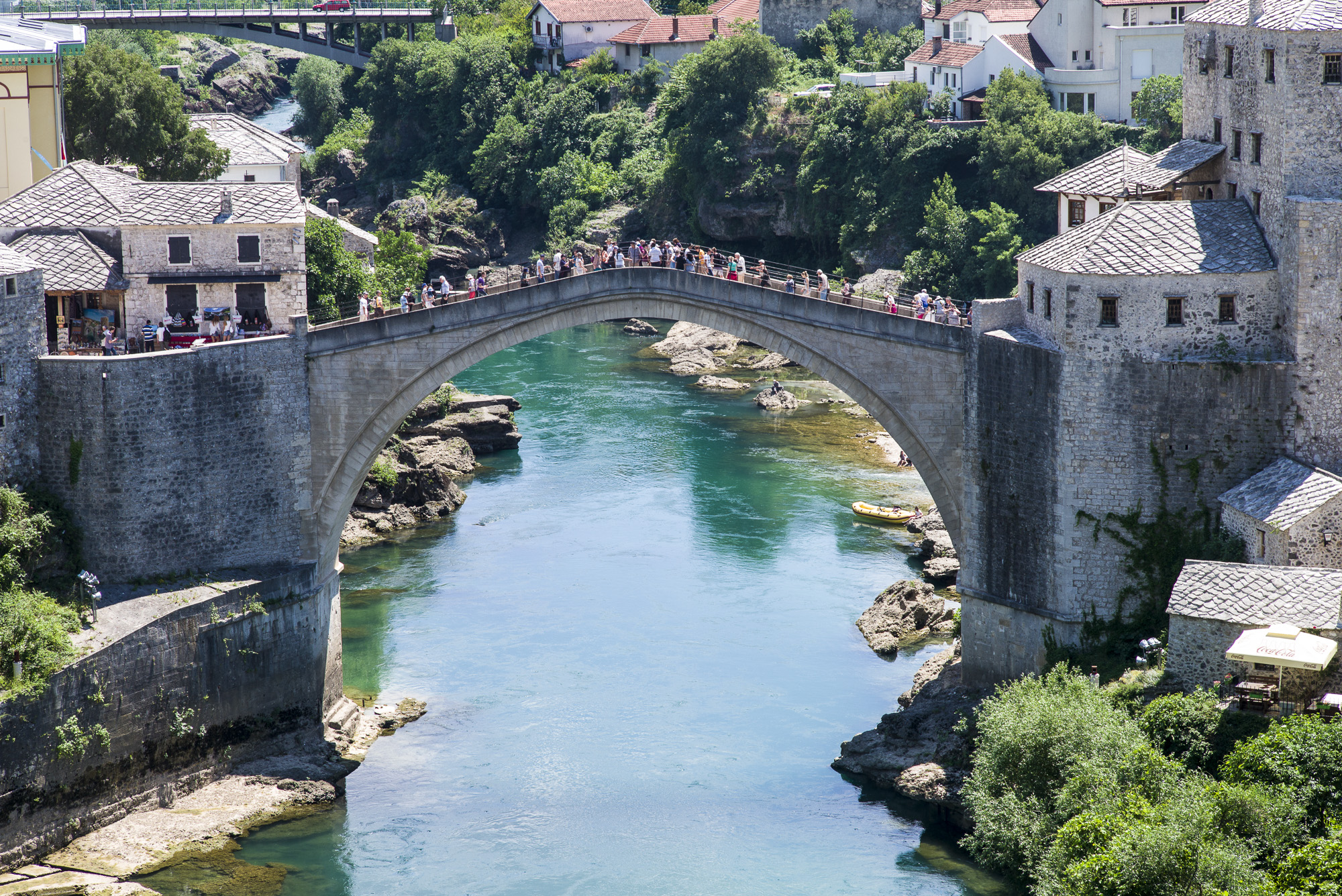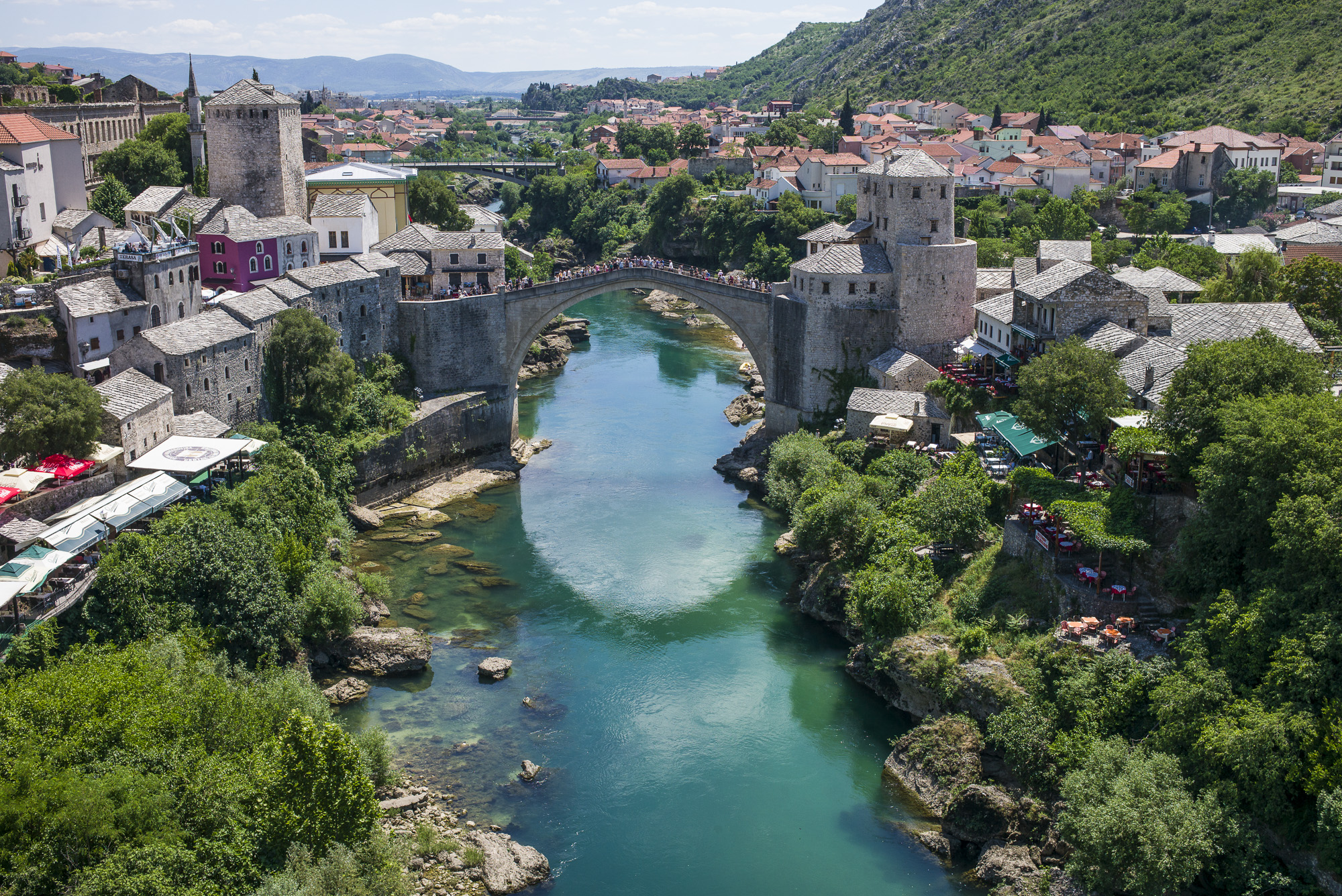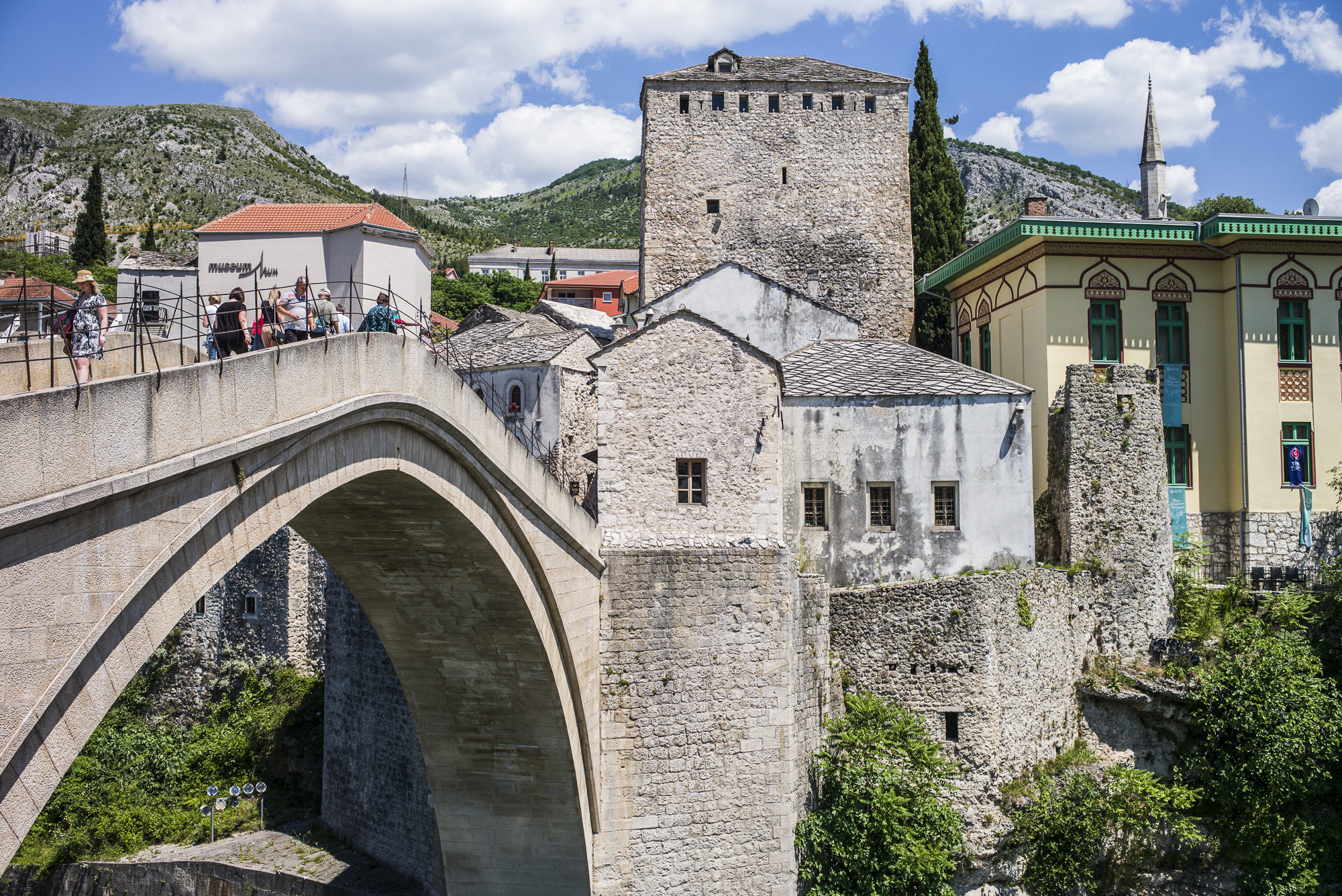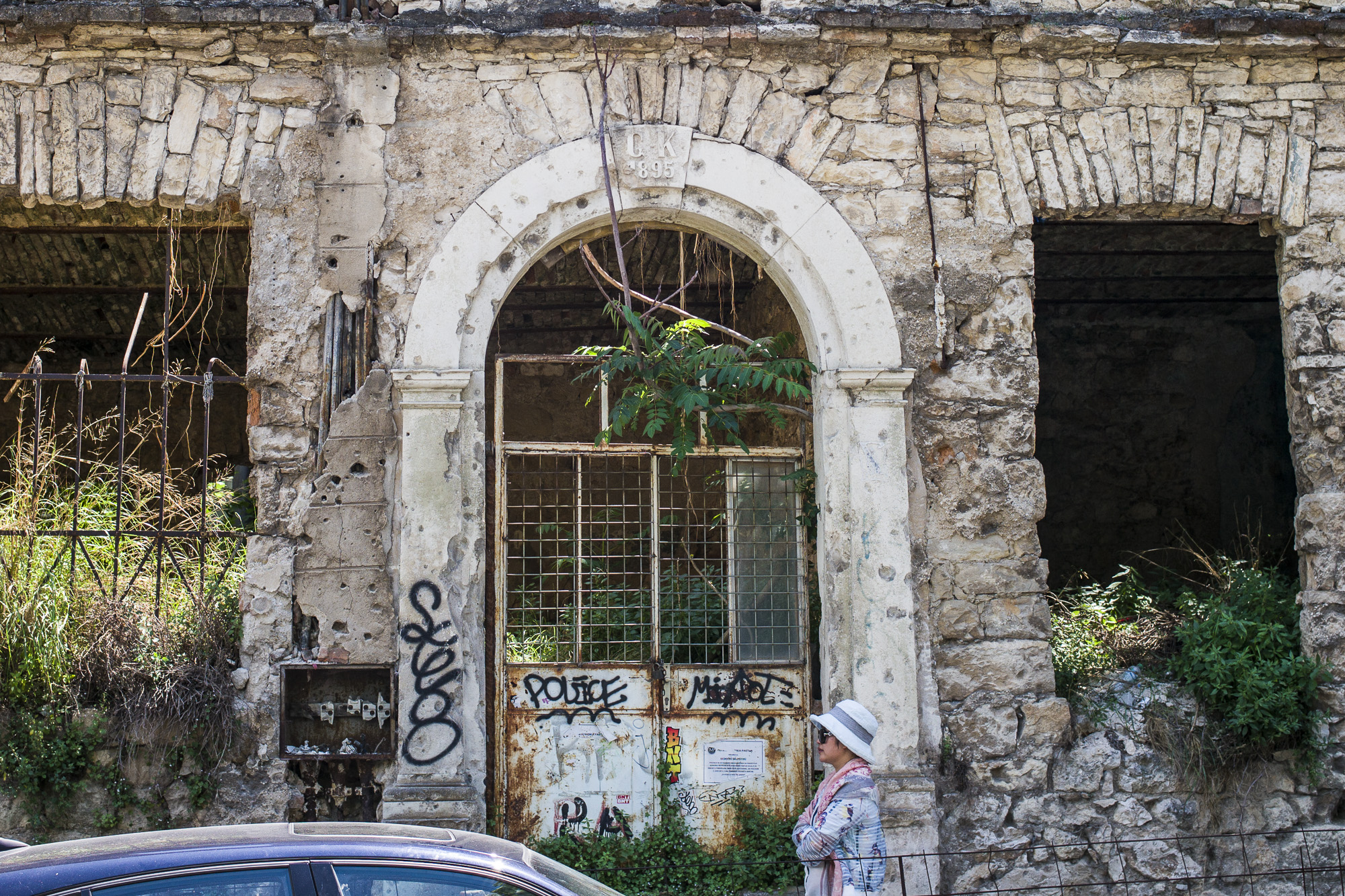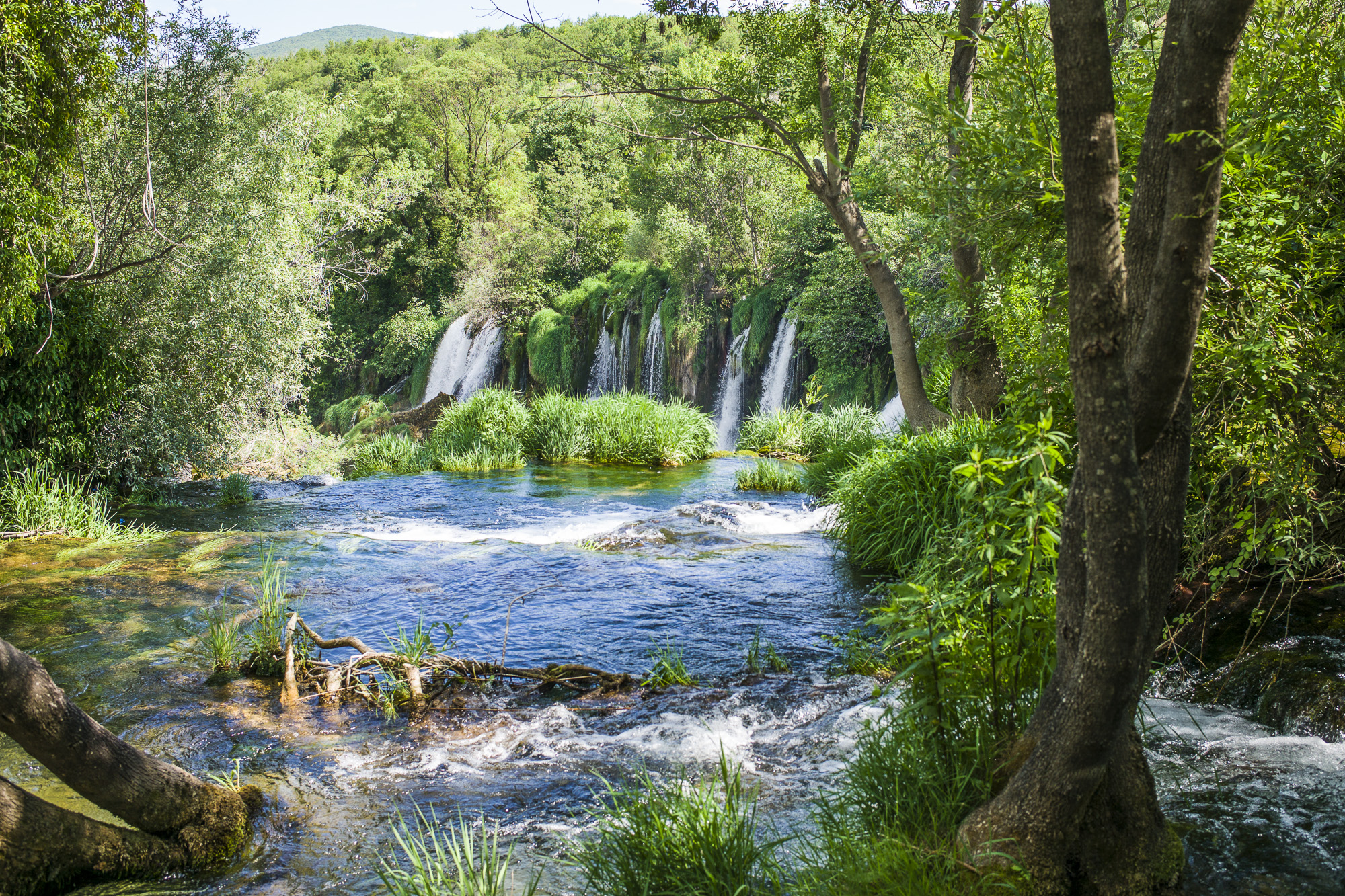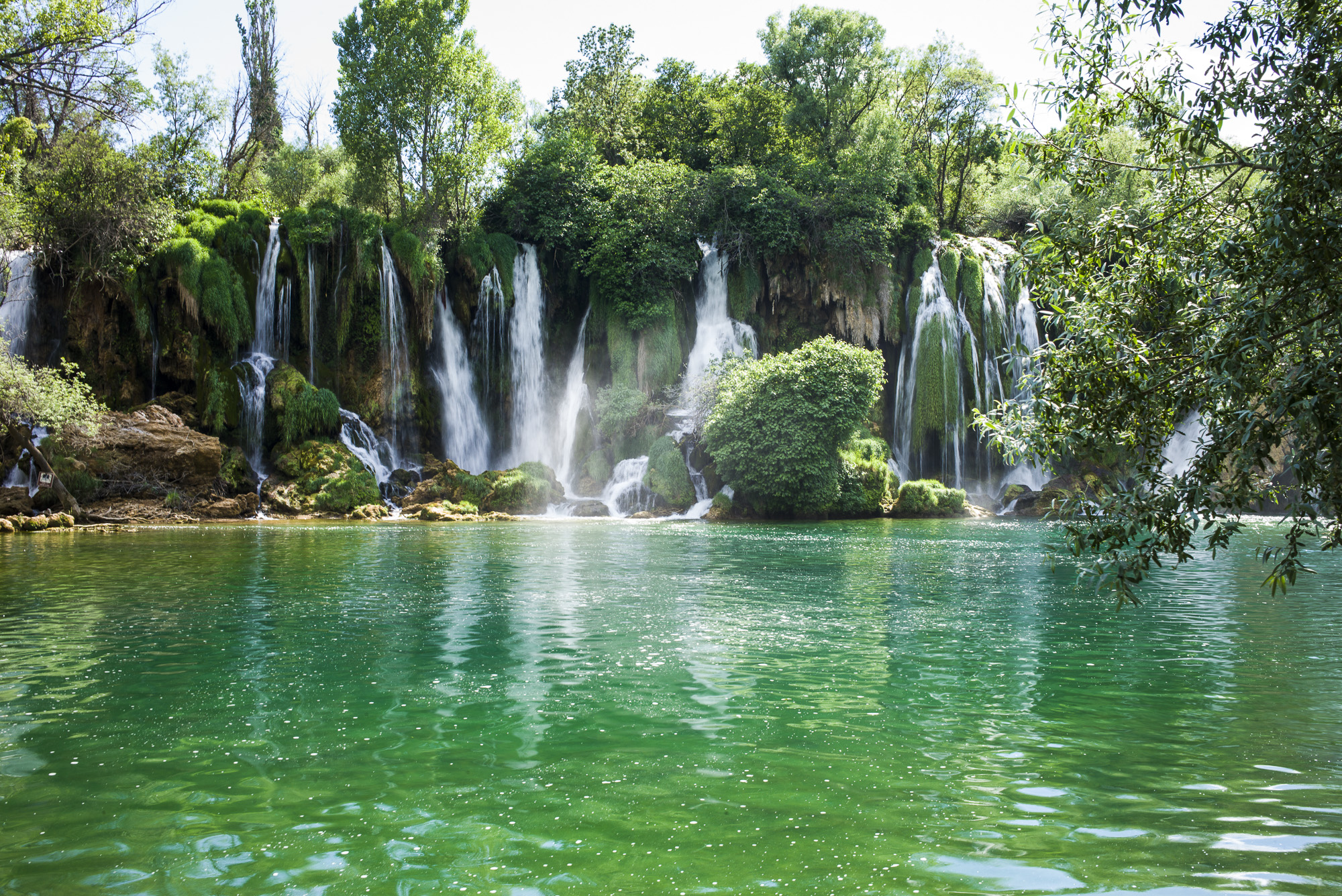Mostar, Bosnia
“Better an illegal tyrant than a civil war.”
The Mostar Bridge was built in the 1500's by the Ottomans, destroyed in 1993 by the Croats, rebuilt in 2004, and is under Unesco protection since 2005
2000 years ago Plutarch wrote these words describing the dilemma of Rome accepting Julius Caesar as dictator for life. Taking his lead from Caesar in 1953, Josip Broz Tito made himself President of Yugoslavia for life. Upon his death, Yugoslavia descended into civil war.
Mostar is a baffling, interesting and complicated town in Bosnia (or is it the Balkans or the former Yugoslavia). Confusing? It gets worse. While there is the natural beauty of undeveloped terrain, Mostar is not on any "Top 10 Beautiful Places to Visit" list. In poker terms, the town was dealt a really bad hand and yet the inhabitants continue to play rather than fold. For example, Bosnia only occupies roughly 26 km of beautiful coastline on the Adriatic. Also, their next door neighbor destroyed the town's crown jewel (more on that later).
So why go? Pico Iyer, the British/Indian travel writer and novelist, wrote "We travel to open our hearts and eyes and learn more about the world than our newspapers will accommodate. We travel to bring what little we can, in our ignorance and knowledge, to those parts of the globe whose riches are differently dispersed.” We drove from neighboring Croatia, with it's beautiful coast, happy, busy inhabitants and bustling tourist economy. 90 minutes later, we presented our passports to Bosnian passport control whose ramshackle office resembled a 20 year old Home Depot garden shed. This post is an attempt to explain our experience as well as provide history and context about this region of the world that is misunderstood and often forgotten.
Shadow of the minaret on the koski mehmed-pasa mosque
Mostar is a small city of about 100,000. The current ethnic make up is roughly Croats (48.4%); Bosniaks (44.1%) and Serbs (4.1%). Mostar is situated on the mighty and historically significant Neretva River and was named after the bridge keepers (mostari) who in medieval times guarded the Stari Most (Old Bridge). This bridge, built by the Ottomans in the 16th century, is one of Bosnia and Herzegovina's most recognizable landmarks, and is considered one of the most exemplary pieces of Islamic architecture in the Balkans. The Ottoman explorer Evliya Çelebi recorded Stari Most in his travel chronicles (called Seyahatname) in the mid 1600’s. He described the bridge "is like a rainbow arch soaring up to the skies, extending from one cliff to the other. ...I, a poor and miserable slave of God, have passed through 16 countries, but I have never seen such a high bridge. It is thrown from rock to rock as high as the sky.”
History
Mostar is in Bosnia, the heart of the Balkans. Some say the word Balkan means the land of blood and honey (honey is "bal" and blood is "kan" in Turkish). Other sources claim alternate etymological descriptions of "Balkan" to mean mountain range or wooded mountains. Regardless of the true origins, this region endured conflict in ancient and modern times. In 1914, 80 miles away in Sarajevo, the assassination of Arch Duke Franz Ferdinand (next in line to rule the Austro-Hungarian empire) by 19-year-old Gavrilo Princip was the catalyst for World War One. Empires since antiquity have collided in the Balkans. The Romans, followed by the Byzantines, the Ottomans, the Austro-Hungarians and the Communists all claimed these lands. Ethnicity and religion are intertwined here. The Serbs practice Orthodox Christianity of the Byzantine Empire. The Croats practice Roman Catholicism. The Bosnians practice Islam of the Ottomans. These three ethnic groups and religions make Bosnia unique and turbulent.
Recent History - Tito and Yugoslavia
We knew little about Yugoslavia and Tito, other than the country was communist, ruled by a dictator and that Communism and dictators were awful. (Traveling to this part of the world shattered our preconceptions of Tito and Yugoslavia, especially after conversations with a few locals.) Along with Tito's mesmerizing personality and sharp intellect, his unique background qualified him to rule an area with ethnic diversity and strong nationalism. Tito's mother was a Slovene, his father was a Croat and his wife a Serb. In WW2, Tito was recognized as a strong leader fighting against the Nazi occupation. In 1944, he became president of the Communist party and ruled until his death in 1980. Perhaps our Mostar tour guide described it best. "If you talk with 7 people here about our history you will get 7 answers. I wish for you to take my version, because it is correct.”
He went on to say that communist Yugoslavia was wonderful and described Tito as a wise father who brought prosperity to the people of Yugoslavia. When Mostar was a Yugoslavian city, there was 3% unemployment. The city was inhabited by 130,000 people. Marriage between the different ethnic and religious groups was common. Tito knew that religion could be divisive so people were not allowed to openly discuss their religion. They could be religious, but not talk about it. A don’t ask don’t tell policy. Our guide explained this policy worked well in Mostar and there was peace and prosperity. In wartime, the population dropped to 30,000.
In Croatia we heard alternative perspectives regarding Tito as the benevolent father. Currently over 85% of Croatians identify as Roman Catholic. One local shared that his family could not practice their religion openly in Yugoslavia because religious involvement limited career options within the communist party. However, another Croatian, whose parents were active in the communist regime, affirmed that life under Tito was better than the present. Lastly, another local shared this interesting story. During the 1980's and 90's, the economy of Dubrovnik, Croatia was very strong due to it's location on the Adriatic coast and healthy economic base of tourism, shipping, and fishing. Slobodan Milošević, Tito's successor, sent a plane every week to collect over 1 million US dollars cash and return to Belgrade, the capital of Yugoslavia. The Croats felt they were paying more than there fair share to support a regime that had Serbia in it's best interest. However, unemployment was low and everyone had health care and housing so overall, being a part of Yugoslavia was not so bad.
Back to the Plutarch quote. When Tito lived, there was peace. Tito died in 1980 and the 80’s were a time of political change in Europe. The Berlin wall came down. The USSR dissolved. Eastern Europe was opening up to the West and turning away from Communism. The winds of political change rushed in to fill the power vacuum left by Tito. Six republics made up the united Yugoslavia (Serbia, Croatia, Monte Negro, Macedonia, Slovenia, Bosnia-Herzegovina). By the end of the 80’s, each of these republics saw new opportunities.
The Serbs were quick to fill the power vacuum that Tito left behind in the Yugoslavia government. The capital of Yugoslavia was Belgrade in Serbia. The Serbs held the majority of the government and military positions. The other republics began to resent the power wielded by the Serbs. So they pursued independence.
The voters of Slovenia were first to declare independence from Yugoslavia in June, 1991. The small Slovenian army was deployed to secure the newly independent nation. Slovenia borders western Europe and the region is mountainous. These conditions led to a short war for independence lasting 15 days. But this defiance started the ball rolling. Croatia was next in October, 1991. And Bosnia-Herzegovenia followed in Feb, 1992.
Due to the ethnic mix, Bosnia is unique. According to the pre-war 1991 census, Muslims (or Bosnians) made up about 44% of the population, Serbs were 31%, the Croats were 17% and the remaining 8% other. At the beginning of the war, the Croats and Muslims were aligned against the Serb forces. However, the presidents of Croatia and Serbia met secretly and agreed peace was possible if they simply divided Bosnia in half to create “Greater Serbia” and “Greater Croatia.” This "solution" would align the Croats and Serbs against the Bosnian Muslims and they would have no home.
From the hill with the cross, the Croat forces shelled Mostar
As we walked the streets of Mostar our guide showed us the hill on one side of the town that the Croats used to shell the city. He then showed us the hill on the other side of the river that the Serbs used to shell the city. He did his best to help us grasp the feeling of living in this battlefield. Children tried to go to school while their parents tried to provide for them, while mortars were raining down from the high hills on each side of the river. Our guide explained the siege was so severe the citizens of Mostar ate grass for food and burned books for warmth. The bridge that survived the fall of the Ottomans, WW1 and WW2 was now destroyed in the civil war. It was clear why our guide loved Tito.
From 1992-1995, Bosnia was the geographic location for much of the fiercest fighting. Figures vary but according to Sarajevo based the Research and Documentation Center, an estimated 101,000 people were killed during the war and over 60% were Bosnians.
How do people come back from this? How do you rebuild your city and your community? In the case of Mostar, they started with the bridge.
“If we are moved by destruction, how can we not be affected by reconstruction?…….I am, above all, a citizen of Mostar. My mother died and I had not yet been able to cry, but when the bridge fell, then I could cry, and here, you see, I am crying again. The bridge belongs to all the people of Mostar. If you heal the bridge, you will start something here.”
The Mostar bridge (Stari Most) over the Neretva River. Note the sun shade, " I DON"T FORGET, I DO FORGIVE, FOREVER
Mostar Today
Mostar Art crafted with spent artillery shells
Mostar is rebuilding. The bridge was restored using many of the original stones. It is a major attraction for tourists. Young men jump from the bridge to the river to entertain the tourists and earn a little money. Jumping from the bridge is a right of manhood for every Mostar boy. Our guide proudly showed the tattoo of Stari Most on his arm. There are shops along the main street for the tourists. You can find Pashmina, T-shirts, and plates. But you can also find artillery shells fashioned into art. Unique art to remind you of your visit to a unique place. Head toward Stari Most and you walk the main street street in the old town which is a dividing line - one side is Croat and the other is Bosnian. There is no Serbian section. Tourists and locals freely mingle, shop and converse but the partition is obvious.
The world's most complicated system of government
The old architecture of Bosnia is sprinkled with holy buildings of the 3 ethnic groups meaning they lived and worshipped next to one another. Prior to the war, there was no division. But the war changed that. The town has 2 separate school systems, medical facilities and police. The presidency rotates every eight months between a Serb, a Bosniak (Bosnian Muslim) and a Croat so there are 3 different agendas every 8 months. Often the agenda is to marginalize work accomplished by the previous administration.
Mary Chen writes in her piece for the GlobalJournalNeu, "Corruption, lack of political will and ethnic discord left over from the war, however, cripple the system today. Politicians take advantage of ethnic and religious differences in order to stay in power, presenting themselves as champions of nationalism when, in reality, they are keeping the people of this country stratified."
Our young guide working to rebuild his home
A 2014 Guardian article stated "The unemployment rate in Bosnia is consistently among the highest in the Balkans and two-thirds of young people are jobless." Public Radio International (PRI) reports that "at 57.5 percent, Bosnia-Herzegovina’s youth unemployment rate is the highest in the world, driven by widespread corruption, nepotism and economic stagnation. The country now finds itself facing a significant brain drain, with educated, skilled youth deciding it easier to look for jobs outside the country. Lack of foreign investment due to corruption and the government bureaucracy is so complex that the country is buckling under its inefficiency. Through it all, the wounds of war are ever-present."
But even with these huge challenges there are people actively rebuilding Mostar. There are artists, shop owners, and others working to make Mostar a worthwhile destination. The enthusiasm of our young guide working hard to rebuild his home was inspirational. He is committed to restoring his homeland and has little patience for the hollow promises of politicians or those abandoning his country. We loved our visit to Mostar. It was not comfortably pleasant like the lakes of Slovenia or the islands in the Adriatic. Instead it was fascinating, tragic and inspiring.
You can read about war. We do every day. Yet experience has a unique quality. Our experience in Mostar was not of war, rather of war's long shadow. This was an unforgettable day.









